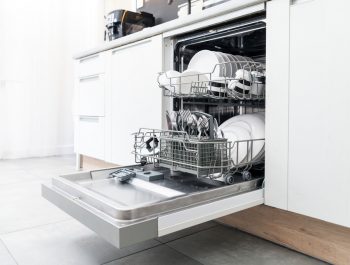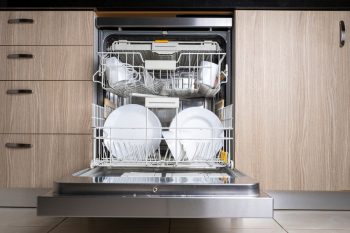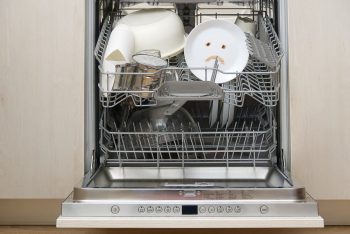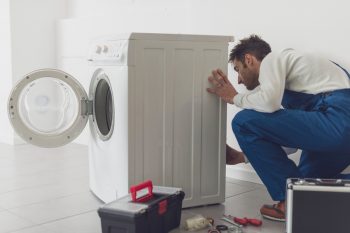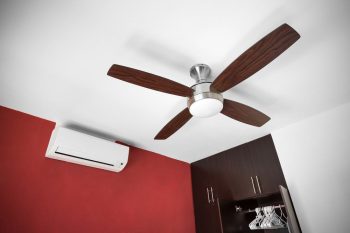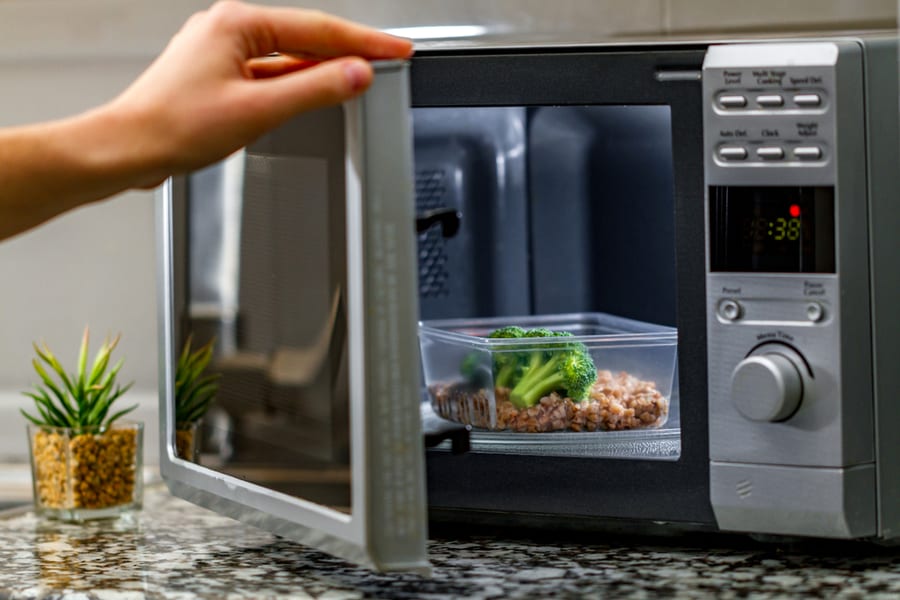
Microwave ovens are some of the most common kitchen appliances.
After a long work day, they offer a reliable and convenient way to cook and defrost frozen foods. However, it can be alarming if you find the unit overheating.
You might wonder if your unit shuts down when it gets too hot. Sadly, the answer is not that simple.
In this post, we will look at what happens when your microwave overheats and some features to put in place to prevent it from getting damaged.
Some microwave models shut down when they get too hot to prevent overheating.
One way they do this is by using a thermal cut-off switch. The switch is attached to the magnetron, cutting off the power supply to the unit when it gets too hot.
The second feature that prevents overheating is the temperature sensors. The sensors are located near the cooking chamber and monitor the food heat levels.
If the temperature gets too high, the sensors instruct the microwave to shut down.
For older microwave models without these features, you must switch off the device manually to prevent overheating.
Likewise, we will look at how the microwave works and some of the reasons that cause the unit to overheat.
How Do Microwaves Work?
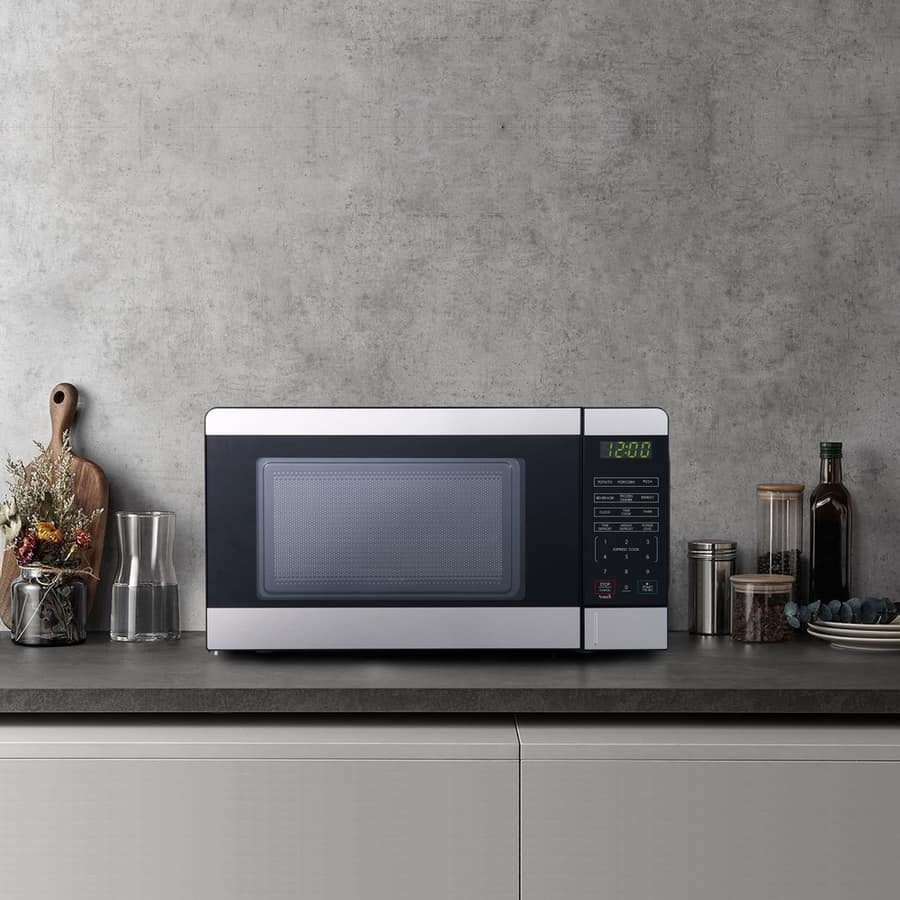
Before knowing what might cause your ovens to overheat and how they shut down, learning more about how it works is essential.
There are three categories of Microwaves based on their functionality we would like to go through.
They include:
- Solo microwave ovens: These are the most common type of microwaves. They use microwave radiation created by moving electrons to defrost your meat. Once microwaves enter the cooking chamber, they penetrate food and cause water molecules to vibrate, heating your food.
- Grill microwave ovens: The grill oven has the usual microwave oven with an additional grill feature. This means you can still reheat, cook, and defrost food. In addition, however, the unit has heating coils for toasting, roasting, and grilling your meat.
- Convection microwave ovens: These ovens still use microwaves to prepare your meals. However, they also use convection currents to heat and bake. A heating element in the cooking chamber heats the air, generating hot air circulation that cooks food.
Safety Features To Prevent Your Microwave From Overheating
Depending on your microwave model, the unit might have some safety features that turn it off in case of overheating.
Let us look at some of these features and their functionality:
1. Thermal Cut-Out Switch

One major safety feature in most ovens is the thermal cut-off switch. Also known as the automatic shut-off, the switch is designed to cut off the current to the unit, turning it off when it gets too hot.
The switch is made from thermally sensitive material that bends when a temperature rating is exceeded. The switch is connected to the magnetron, monitors its temperature, and cuts off its power when it gets too hot.
2. Temperature Sensors
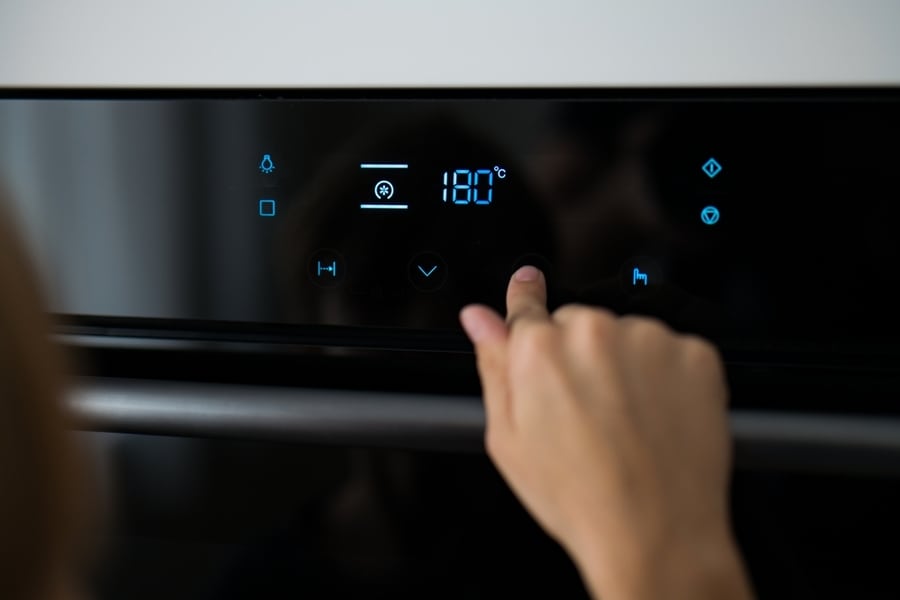
Though less common, temperature sensors also prevent your microwave from overheating. These devices use infrared sensors to monitor the temperature within the cooking chamber.
When the temperature in the chamber gets too high, the sensors cut off the power supply to the unit.
However, not all microwaves have all these safety features. That means older models are at a higher risk of overheating if not manually turned off.
6 Reasons Why a Microwave Gets Too Hot
Overheating is rarely a good sign when using electrical devices, including microwaves.
Too much heat can cause damage to the internal components of the unit or even start a fire. Likewise, overheating also reduces the appliance’s efficiency, leading to high energy consumption.
Here are some of the most common reasons for your oven overheating:
1. Overuse

One of the common reasons for the issues is overusing the unit. Though you might need to defrost a lot of food at once, running the device for too long is not a good idea.
By themselves, microwaves produce much heat when cooking, leading to heat buildup if they are overused.
To prevent overusing the appliance, consider leaving frosted foods out for a few hours before cooking them. This should reduce the time needed to defrost and prepare the meal.
Also, proper food preparation can help reduce hasty and continuous microwave use.
2. Damaged Parts

Likewise, damaged internal parts can also cause the oven to overheat. Over time, components like the microwave can wear out, causing the unit to run inefficiently.
One of these parts includes the magnetron responsible for pushing microwaves in the unit. When it is defective, it can fail to control electron movement, causing overheating.
Furthermore, a faulty fan motor can make your microwave hotter. The fan motor helps enhance air circulation through the oven’s exhaust system. A defective fan cannot cool down the unit, leading to overheating.
If your microwave is damaged, it is best to call a technician to look at it. They can replace faulty parts, ensuring your unit works efficiently and remains cool while running.
Always buy original equipment manufacturer (OEM) parts that match your oven model. This reduces comparability issues and ensures the microwave runs more efficiently.
3. Power Surges

Thirdly, power surges can also be the reason for your overheating oven.
Surges during lightning strikes can cause an excess flow of electrical current through circuits around the house. For example, if your microwave is still plugged in and running during the surge, it can cause it to get hotter than usual.
Ensure all home appliances are plugged into a surge protector or power strip to prevent a power surge from affecting your microwave.
It is also crucial to call an electrician to test your circuit breakers. If the breaker did not trip during the surge, it might indicate that it is faulty and needs replacing.
4. Defective Thermostat
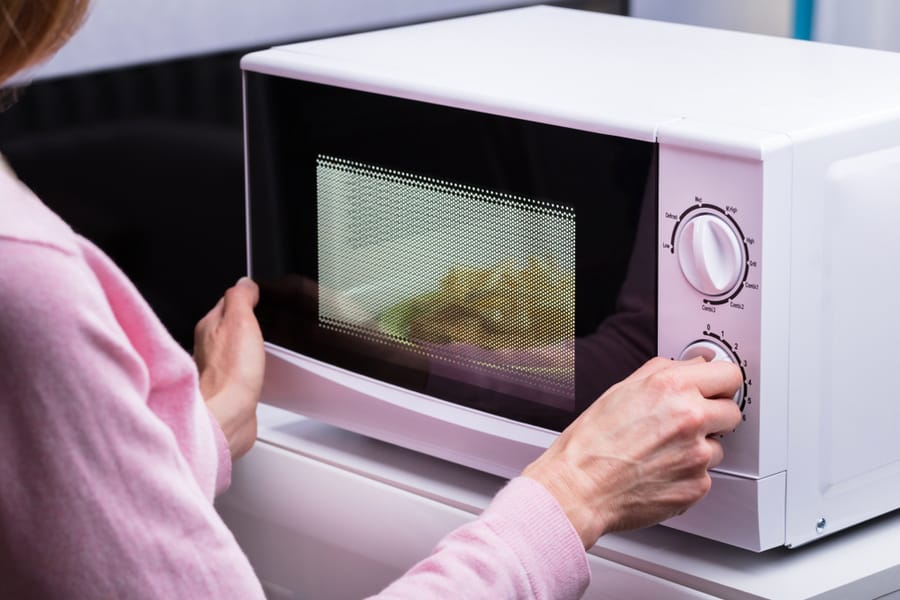
A defective thermostat might also be the culprit. The thermostat is a safety device used to control the temperature in the microwave and prevent it from overheating.
It does this by cutting the power supply to the unit when the thermostat threshold temperature is exceeded.
However, if the thermostat in the oven is faulty, the unit cannot monitor and regulate its temperature. This can lead to a higher magnetron and air exhaust temperature, causing it to overheat.
A malfunctioning thermostat should be fixed as soon as possible.
5. Clogged Ventilation
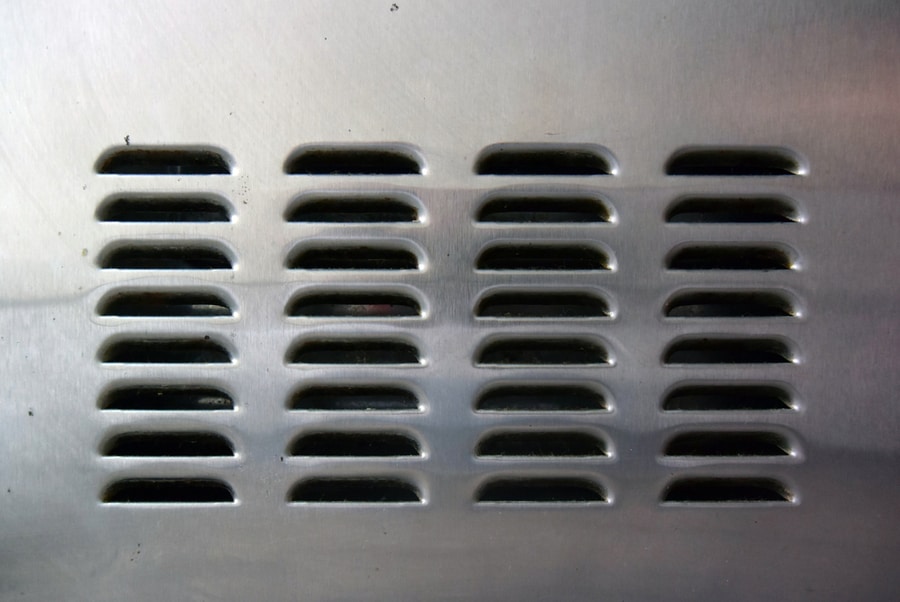
A clogged microwave ventilation might also cause the appliance to overheat. All units have a ventilation system that helps with air circulation and keeps them cool.
However, if your unit is not regularly cleaned, dirt, dust, and food particles can build up around parts like the ventilation and clog them.
Clogged ventilation prevents air from freely moving through the unit, causing it to get hotter than usual.
A clogged ventilation system can be cleaned with a brush and dry towel to help improve its performance and reduce overheating. Likewise, you can also use a vacuum cleaner to suck up dirt in hard-to-reach areas.
6. Improper Use
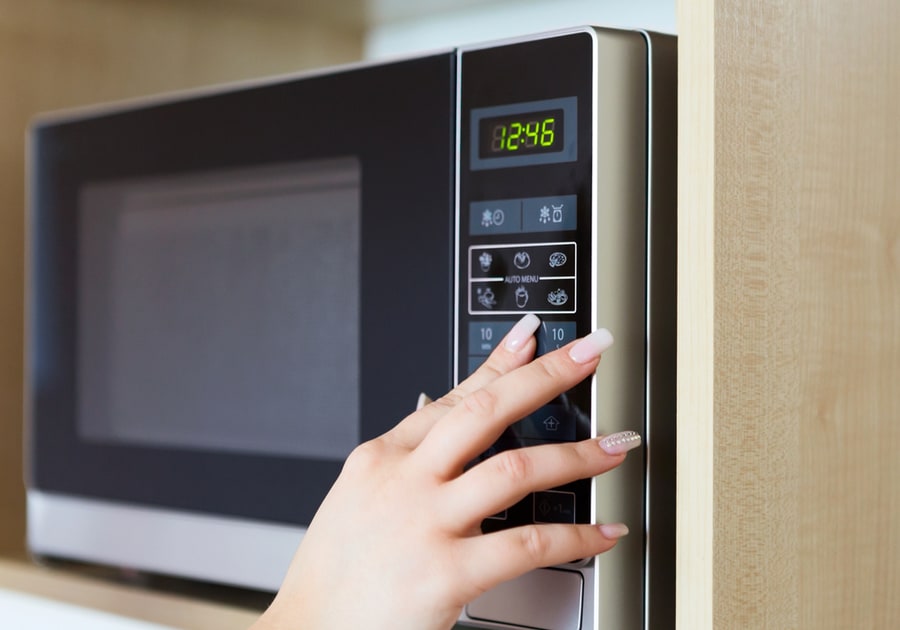
Finally, improper use of the device might also cause it to overheat.
We might often try to defrost food that does not properly fit into the oven, preventing the turntable from spinning. This leads to uneven heat distribution within the unit, which can cause it to heat up.
Additionally, inserting the wrong type of cookware into the device might lead to overheating. Inserting metal objects in a solo microwave can spark the unit, which might turn into a fire.
Proper unit use prevents it from getting too hot and adds to its lifespan. Do not heat food too large to fit the microwave; ensure you put in the right utensils.
If you have trouble finding information on using your oven, consult the user manual or call customer care.
Conclusion
Overheating can cause damage to your microwave’s parts and is also a considerable fire risk around the house. Some models have various safety features to shut down the units before they get too hot.
One of the features is the thermal cut-off switch that monitors the magnetron’s temperature and cuts off power to the device if the temperature threshold is exceeded.
Additionally, temperature sensors monitor heat in the cooking chamber and switch off the oven when the temperature is too high.
However, some older models might lack these features and must be manually turned off to prevent overheating.
Frequently Asked Questions
What Causes a Microwave Not To Turn On?
The most common reasons why your microwave is not turning on include the following:
- A blown fuse.
- A faulty door switch.
- Defective control panel.
- Dirty or broken door assembly.
- Tripped circuit breaker.
What Happens if I Overheat Food in a Microwave?
Letting food cook longer than it should or using a higher power level is not a problem for most people.
However, overcooking food is not a good idea. It can cause your food to burn, damage the microwave, and in the worst case, there is a risk of an explosion if the food ignites.


